Every day in spring, I search the entrance to my wooded garden, looking for signs that Tulipa tarda may soon appear. The bright yellow and white blooms of this tiny tulip open up each day to catch the Sun’s rays and spread cheer. T. tarda is one of the many varieties of species tulips, sometimes called “wild” tulips or botanical tulips. Learn more about species varieties!
Although typically not as showy as their tall hybrid relatives, these smaller tulips have a lot going for them:
- Most come back every year.
- Single bulbs often multiply to create generous clumps.
- Several varieties can be grown easily in all gardening regions.
Consider planting species tulips this fall to complement your standard bulbs.
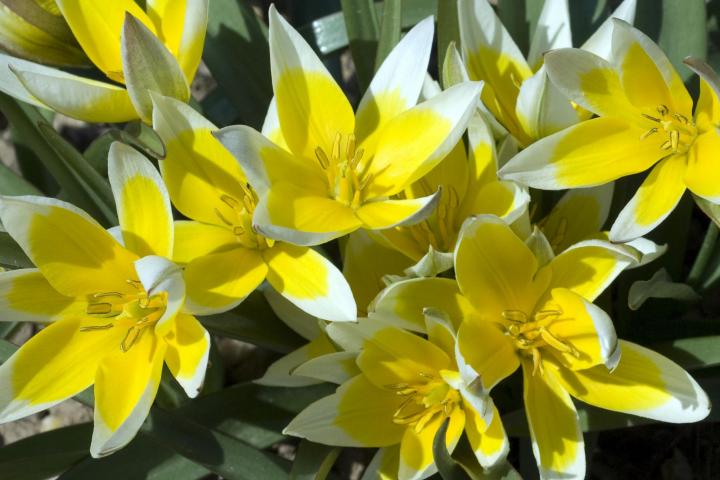
Tulipa tarda is one of the many varieties of “wild” tulips. Photo credit: Emer1940/Getty Images
Most species of tulips are star- or bowl-shaped. The star-shaped tulips usually stand 4 to 8 inches high, with flowers in softer shades of purple, pink, white, or yellow. Bowl-shaped species tulips, reaching up to 14 inches in height, usually bloom in brilliant red, although some are yellow. The stems—shorter and sturdier than those of most hybrid tulips—make them less susceptible to the sudden harsh winds of erratic spring weather.
Many species tulips originated in the rocky areas surrounding the Mediterranean. This is why rock gardens are ideal places in which to plant them. These dry sites, with good drainage, imitate their native growing conditions. Plus, the bulb’s small size fits the scale of most rock gardens.
The dry, well-drained conditions of herb gardens also support wild tulips. One eye-catching treatment is the star-shaped species hybrid ‘Little Beauty’ planted to sprout in the midst of a mat of thyme. The effect in bloom is delightful.
In the garden, species tulips attract attention when viewed against a solid-color background of ground covers such as vinca and ajuga. They can also hold their own in a colorful mixed display of other spring bulbs, such as narcissus, hyacinth, scilla, and chionodoxa. To encourage naturalizing, avoid deadheading.
Apartment and urban enthusiasts, do not despair: Any species tulips will produce more than one flower per stem, making them perfect for containers.
Choose Your Bloom!
Species tulip options can seem endless—but it’s the wide variety that makes them fun!
BY BLOOM TIME (Usually between February and April)
- Some species tulips, such as T. bakeri, T. batalinii, T. humilis, T. kaufmanniana, and T. turkestanica, bloom in early to midspring.
- Later-blooming varieties include T. linifolia, T. neustreuvae, T. sprengeri, and T. vvedenskyi.
BY BLOOMS
- Multiflower varieties include T. biflora, T. greigii ‘Quebec’, T. praestans ‘Fusilier’ and ‘Unicum’, T. tarda, and T. turkestanica.
BY COLOR
- If color is your key criterion, you can not go wrong with bright red T. eichleri (also known as T. undulatifolia).
- The softer-tone, smaller, star-shape varieties create more impact when incorporated into sweeps of mass plantings, such as yellow T. sylvestris, which can commonly be seen naturalized in woodlands on the U.S. East Coast.
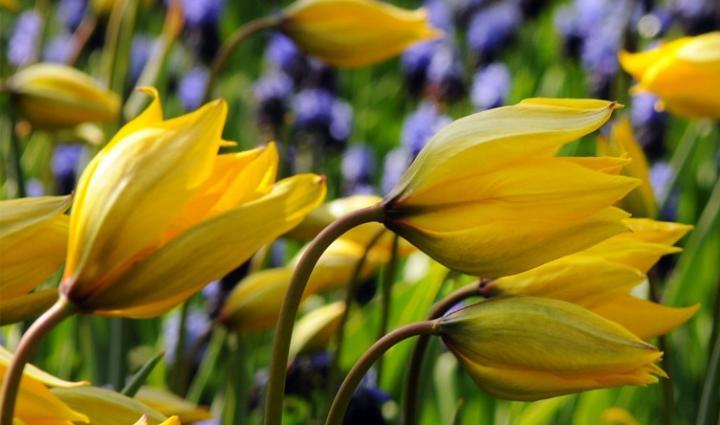
T. sylvestris creates more impact in mass plantings. Photo credit: vanengelen.com
BY FOLIAGE
T. greigii often displays mottled or striped leaves.
T. kaufmanniana ‘Heart’s Delight’ has purple mottled foliage.
T. fosteriana ‘Juan’, one of the tallest and earliest of the early Emperor tulips, has mottled foliage as well.
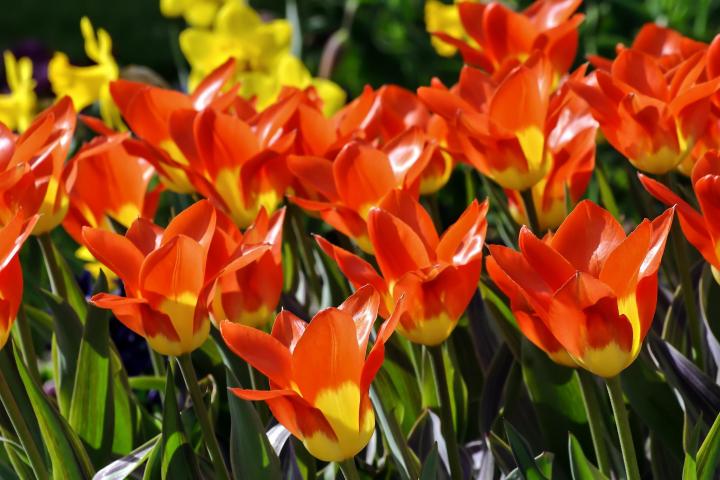
T. Fosteriana ‘Juan’ has mottled foliage. Photo credit: Werner Meidinger/Getty Images
BY LOCATION
If you live in the colder northern regions (Zones 3 to 6), you’re in luck: Just about any species bulb will thrive for you.
If you reside in the South or mild-winter areas of the West and want to avoid putting your bulbs through a chilling period, choose varieties that overwinter in Zones 8 to 10, such as the lady tulip (T. clusiana), Candia tulip (T. saxatilis), and Florentine tulip (T. sylvestris).
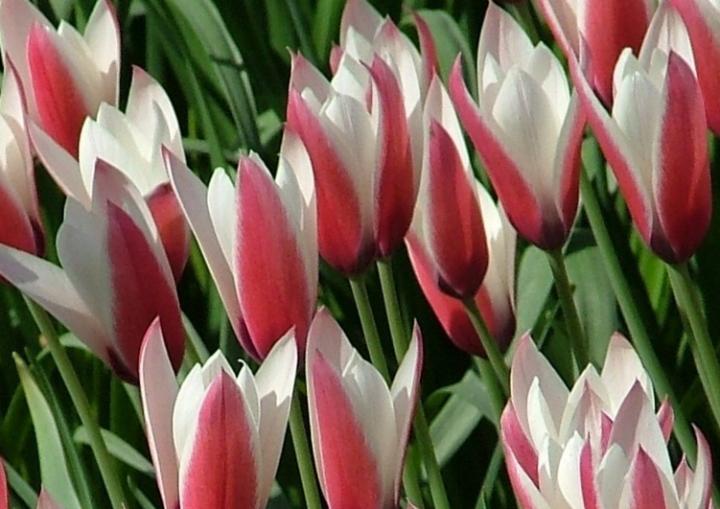
T. clusiana ‘Peppermint Stick’: :At night, the petals close up tight into a red bulb shape. In the morning, they open to display the red-and-white pattern of the petals. By noon, they have opened out as flat as a star. Throughout the afternoon, the flower will continue to track the Sun and then, at sunset, it will close up tight again, fully erect.” –Central Texas gardener Scott Ogden, author of Garden Bulbs for the South (Timber Press, 2007). Photo credit: johnscheepers.com
BY SCENT
The most fragrant wild tulips are T. aucheriana, T. biflora, T. saxatilis, T. sylvestris, and T. turkestanica.
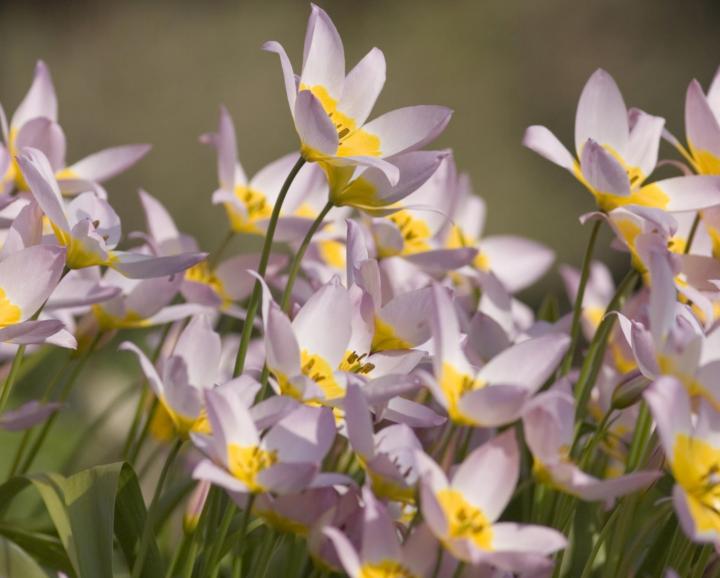
T. Saxatilis is one of the most fragrant wild tulips. Photo credit: SteveStone/Getty Images
Planting and Care
It’s best to plant tulip bulbs in the fall. (But don’t lose hope if you’re planting your tulips later in the season—just follow these tips!)
Choose a sunny site for best display, although your tulips will tolerate some shade. Soil should be either humus-rich or sandy loam, with good drainage. Plant the bulbs with their roots or basal plate downward at a depth that is three to four times the width of the bulb. Water well after planting.
Most species tulips naturalize by seeds or underground stems called stolons. Encourage reseeding by leaving the faded flower heads on the plant. Just as with other tulips, let the foliage die back naturally to recharge the bulbs.
You do not need to fertilize bulbs in the first year after planting, but in successive years, top them with compost, well-rotted manure, or a commercial organic fertilizer in the fall.
See our bulb planting chart for more planting information.
Prevent Pests From Spoiling the Show
Place screening over the planting area to keep rabbits and squirrels from digging.
Deter rodents such as voles and gophers by adding a handful of sharp gravel to the planting hole or planting the bulbs in a mesh cage or bag. Avoid bonemeal; it actually attracts critters—such as your dog.
Sprinkle your planting area with smelly stuff, such as soap or puréed garlic bulbs.
Find more tulip tips on our general Tulip Growing Guide.
















